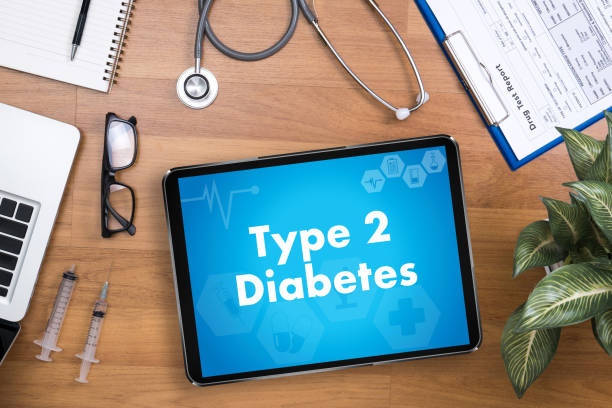 Flat no 101, Abhinandana Jewel, Lanco Hills Rd,
Flat no 101, Abhinandana Jewel, Lanco Hills Rd,
Manikonda, Telangana 500089 Mon 07:00 a.m - 02:00 p.m
Mon 07:00 a.m - 02:00 p.m
05:00 p.m - 08:00 p.m
DIABETES
Why should you see an endocrinologist for diabetes?
What are the different types of diabetes?
The most common types of diabetes are type 1, type 2, and gestational diabetes.

Type 1 Diabetes

Type 2 Diabetes

Gestational Diabetes

Other Types of Diabetes
How common is diabetes?
Type 2 diabetes mellitus (T2DM) is the most common form of diabetes. One of the reasons cited for this increasing trend in the prevalence of T2DM in low and middle income countries is Asia paradox. Asia paradox refers to the rapid socio-economic and demographic changes in the Asian population towards that of a developed economy. This can be evident in its economic development, urbanization, and nutritional transition.
India, with 69.2 million people with T2DM, is the country with 2nd highest number of people living with diabetes mellitus worldwide next to China
Who is more likely to develop type 2 diabetes?
What health problems can people with diabetes develop?
heart disease
stroke
kidney disease
eye problems
dental disease
nerve damage
foot problems
What causes type 1 diabetes?
What causes type 2 diabetes?
Type 2 diabetes—the most common form of diabetes—is caused by several factors, including lifestyle factors and genes.
Overweight, obesity, and physical inactivity
You are more likely to develop type 2 diabetes if you are not physically active and are overweight or obese. Extra weight sometimes causes insulin resistance and is common in people with type 2 diabetes. The location of body fat also makes a difference. Extra belly fat is linked to insulin resistance, type 2 diabetes, and heart and blood vessel disease. To see if your weight puts you at risk for type 2 diabetes, check out these Body Mass Index (BMI) charts.
Insulin resistance
Type 2 diabetes usually begins with insulin resistance, a condition in which muscle, liver, and fat cells do not use insulin well. As a result, your body needs more insulin to help glucose enter cells. At first, the pancreas makes more insulin to keep up with the added demand. Over time, the pancreas can’t make enough insulin, and blood glucose levels rise.
Genes and family history
As in type 1 diabetes, certain genes may make you more likely to develop type 2 diabetes. The disease tends to run in families and occurs more often in these racial/ethnic groups:
African Americans
Alaska Natives
American Indians
Asian Americans
Hispanics/Latinos
Native Hawaiians
Pacific Islanders
What causes gestational diabetes?
Type 2 diabetes—the most common form of diabetes—is caused by several factors, including lifestyle factors and genes.
Scientists believe gestational diabetes, a type of diabetes that develops during pregnancy, is caused by the hormonal changes of pregnancy along with genetic and lifestyle factors.
Insulin resistance
Hormones produced by the placenta NIH external link contribute to insulin resistance, which occurs in all women during late pregnancy. Most pregnant women can produce enough insulin to overcome insulin resistance, but some cannot. Gestational diabetes occurs when the pancreas can’t make enough insulin.
As with type 2 diabetes, extra weight is linked to gestational diabetes. Women who are overweight or obese may already have insulin resistance when they become pregnant. Gaining too much weight during pregnancy may also be a factor.Hormonal changes, extra weight, and family history can contribute to gestational diabetes.
Genes and family history
Having a family history of diabetes makes it more likely that a woman will develop gestational diabetes, which suggests that genes play a role. Genes may also explain why the disorder occurs more often in African Americans, American Indians, Asians, and Hispanics/Latinas.
What else can cause diabetes?
Genetic mutations NIH, other diseases, damage to the pancreas, and certain medicines may also cause diabetes.
Genetic mutations
Monogenic diabetes is caused by mutations, or changes, in a single gene. These changes are usually passed through families, but sometimes the gene mutation happens on its own. Most of these gene mutations cause diabetes by making the pancreas less able to make insulin. The most common types of monogenic diabetes are neonatal diabetes and maturity-onset diabetes of the young (MODY). Neonatal diabetes occurs in the first 6 months of life. Doctors usually diagnose MODY during adolescence or early adulthood, but sometimes the disease is not diagnosed until later in life.
Cystic fibrosis NIH produces thick mucus that causes scarring in the pancreas. This scarring can prevent the pancreas from making enough insulin.
Hemochromatosis causes the body to store too much iron. If the disease is not treated, iron can build up in and damage the pancreas and other organs.
Hormonal diseases
Some hormonal diseases cause the body to produce too much of certain hormones, which sometimes cause insulin resistance and diabetes.
Cushing’s syndrome occurs when the body produces too much cortisol—often called the “stress hormone.”
Acromegaly occurs when the body produces too much growth hormone.
Hyperthyroidism occurs when the thyroid gland produces too much thyroid hormone.
Damage to or removal of the pancreas
Pancreatitis, pancreatic cancer, and trauma can all harm the beta cells or make them less able to produce insulin, resulting in diabetes. If the damaged pancreas is removed, diabetes will occur due to the loss of the beta cells.
Symptoms of Diabetes?
Symptoms of diabetes include
increased thirst and urination
increased hunger
fatigue
blurred vision
numbness or tingling in the feet or hands
sores that do not heal
unexplained weight loss
Symptoms of type 1 diabetes can start quickly, in a matter of weeks. Symptoms of type 2 diabetes often develop slowly—over the course of several years—and can be so mild that you might not even notice them. Many people with type 2 diabetes have no symptoms. Some people do not find out they have the disease until they have diabetes-related health problems, such as blurred vision or heart trouble.
Risk Factors for Type 2 Diabetes
Your chances of developing type 2 diabetes depend on a combination of risk factors such as your genes and lifestyle. Although you can’t change risk factors such as family history, age, or ethnicity, you can change lifestyle risk factors around eating, physical activity, and weight. These lifestyle changes can affect your chances of developing type 2 diabetes. Read about risk factors for type 2 diabetes below and see which ones apply to you. Taking action on the factors you can change can help you delay or prevent type 2 diabetes.
You are more likely to develop type 2 diabetes if you
are overweight or obese
are age 45 or older
have a family history of diabetev
have high blood pressure
have a low level of HDL (“good”) cholesterol, or a high level of triglycerides
have a low level of HDL (“good”) cholesterol, or a high level of triglycerides have a history of gestational diabetes or gave birth to a baby weighing 9 pounds or more
are not physically active
have a history of heart disease or stroke
have depression NIH external link
have polycystic ovary syndrome NIH external link, also called PCOS
have acanthosis nigricans—dark, thick, and velvety skin around your neck or armpits
What can I do to prevent type 2 diabetes?
You can take steps to help prevent or delay type 2 diabetes by losing weight if you are overweight, eating fewer calories, and being more physically active. Talk with your health care professional about any of the health conditions listed above that may require medical treatment. Managing these health problems may help reduce your chances of developing type 2 diabetes. Also, ask your health care professional about any medicines you take that might increase your risk.
Preventing Type 2 Diabetes
Perhaps you have learned that you have a high chance of developing type 2 diabetes, the most common type of diabetes. You might be overweight or have a parent, brother, or sister with type 2 diabetes. Maybe you had gestational diabetes, which is diabetes that develops during pregnancy. These are just a few examples of factors that can raise your chances of developing type 2 diabetes.
Diabetes can cause serious health problems, such as heart disease, stroke, and eye and foot problems. Prediabetes also can cause health problems. The good news is that type 2 diabetes can be delayed or even prevented. The longer you have diabetes, the more likely you are to develop health problems, so delaying diabetes by even a few years will benefit your health. You can help prevent or delay type 2 diabetes by losing a modest amount of weight by following a reduced-calorie eating plan and being physically active most days of the week. Ask your doctor if you should take the diabetes drug metformin NIH external link to help prevent or delay type 2 diabetes.1
How can I lower my chances of developing type 2 diabetes?
Research such as the Diabetes Prevention Program External link shows that you can do a lot to reduce your chances of developing type 2 diabetes. Here are some things you can change to lower your risk:
Lose weight and keep it off. You may be able to prevent or delay diabetes by losing 5 to 7 percent of your starting weight.1 For instance, if you weigh 200 pounds, your goal would be to lose about 10 to 14 pounds.
Move more. Get at least 30 minutes of physical activity 5 days a week. If you have not been active, talk with your health care professional about which activities are best. Start slowly to build up to your goal.
Eat healthy foods most of the time. Eat smaller portions to reduce the amount of calories you eat each day and help you lose weight. Choosing foods with less fat is another way to reduce calories. Drink water instead of sweetened beverages
Ask your health care professional about what other changes you can make to prevent or delay type 2 diabetes.
Most often, your best chance for preventing type 2 diabetes is to make lifestyle changes that work for you long term. Get started with Your Game Plan to Prevent Type 2 Diabetes.
Losing weight through healthy eating and regular physical activity can help you prevent type 2 diabetes.
What should I do if my health care professional told me I have prediabetes?
Prediabetes is when your blood glucose, also called blood sugar, levels are higher than normal, but not high enough to be called diabetes. Having prediabetes is serious because it raises your chance of developing type 2 diabetes. Many of the same factors that raise your chance of developing type 2 diabetes put you at risk for prediabetes. Other names for prediabetes include impaired fasting glucose or impaired glucose tolerance. Some people call prediabetes “borderline diabetes.”
About 1 in 3 Americans has prediabetes, according to recent diabetes statistics from the Centers for Disease Control and Prevention. You won’t know if you have prediabetes unless you are tested.
If you have prediabetes, you can lower your chance of developing type 2 diabetes. Lose weight if you need to, become more physically active, and follow a reduced-calorie eating plan.
Get started with Your Game Plan to Prevent Type 2 Diabetes. For more support, you can find a lifestyle change program near you through the National Diabetes Prevention Program


